When gardeners say the word bulb, it can mean several things. In horticultural terms, these plant parts refer to the underground food and water-storage organs of certain plant species that are valued for their flowers.
What should I consider when selecting bulbs?
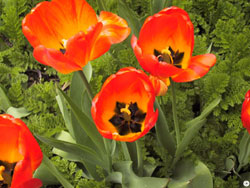 |
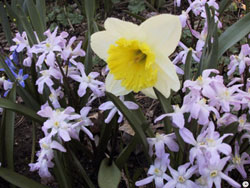 |
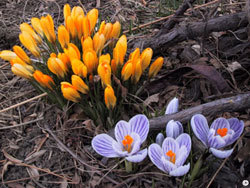 |
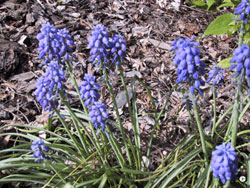 |
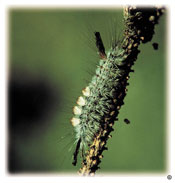 |
When selecting bulbs, consider several factors before you buy. It’s critical to know the time bulbs will flower. Along the Front Range, the exact date depends on the weather, amount of precipitation, the elevation at which bulbs are planted, and planting depth. These variables affect flowering time in your garden, which might be different than what the label indicates. To avoid disappointment, select various bulbs with a variety of flowering times to lengthen the bloom period in your garden. Generally speaking, crocus, snowdrops, species tulips, dwarf iris and Siberian squill are very early, reliable bloomers. Early to late-spring bloomers include most varieties of grape hyacinths, tulips, daffodils, fritillaria and common hyacinths. Late spring to early summer bloomers include alliums, bearded iris, and Dutch iris. Careful planning can lead to an outstanding bloom display from early March through early June.
How deep should I plant bulbs?
Plant bulbs deeper than seed, usually three to four times the diameter of the bulb. Bulbs prefer a sandy or clay loam soil, but be sure to plant bulbs two inches deeper in sandy soil.
Are growing conditions different for different bulbs?
Do some research on the required growing conditions before you make a purchase, especially when planting in wet soils, very dry soils, or shady areas. For successful flowering, be sure to choose the best plant for the site.
Are there some bulbs that are better than others?
Finally, check the size and condition of the bulb. Always select the largest bulbs of each variety, because there is a direct correlation between bulb and flower size. The damaged and deteriorated bulbs found on clearance racks are not a bargain. A bulb should be plump, firm and heavy for its size. Avoid bulbs that show evidence of mold, scars, cuts, soft spots or blemishes, or appear withered or dried out. Two exceptions to this rule are anemone and ranunculus, which naturally look totally shriveled and shrunken.
How soon should I plant my bulbs after getting them?
After selecting your bulbs, plant them as soon as possible. If you must postpone planting, store bulbs loosely in paper bags in the refrigerator. Be sure to keep them in a separate bin from fruits and vegetables so they won’t be damaged by the ethylene gas of ripening fruit.
For more information, see the following Colorado State University Extension fact sheet(s).



